The Ministry of Defence has confirmed that BAE Systems will construct Royal Navy and Norwegian Navy Type 26 frigates in parallel on the Clyde, following Norway’s decision to adopt the design.
Labour peer Lord West of Spithead asked whether two build streams would be established to ensure delivery schedules for both navies are met.
Responding on 16 September, Defence Minister Lord Coaker said: “The recent announcement by the Norwegian Government to select the UK as a strategic partner for the acquisition of Type (T26) warships is expected to provide a £10 billion boost to the UK economy and support more than 400 British companies.”
He added: “Both the Royal Navy and Norwegian Navy T26 frigates will be built simultaneously by BAE Systems on the Clyde, benefitting from investments already made, such as the Janet Harvey Shipbuilding Hall in Govan. The new Shipbuilding Hall will improve schedule performance and the pace of delivery, reducing the time between future ship deliveries for both the UK and Norway.”
The Type 26, also known as the City-class frigate, is being built for the Royal Navy to replace the ageing Type 23s. Its export success with Australia and Canada had already established it as a significant international programme before Norway became the latest customer. According to the government, the dual build will take advantage of recent shipyard modernisation in Glasgow, which is designed to accelerate throughput and deliver multiple ships at pace.
Inside a conference room in a building overlooking the Janet Harvey Hall on Glasgow’s River Clyde, Sir Simon Lister recently laid out a clear ambition for British warship production: pace, precision, and purpose.
The new shipbuilding facility, one of the largest covered yards in Europe, is central to a transformation that aims to deliver Royal Navy frigates faster than ever before.
Lister, Managing Director of BAE Systems Naval Ships, described a future where warships are not just built, but engineered as “nodes in a network of military capability.”
Speaking at a media briefing, he explained, “The word I never really understood when I was the customer of this organisation was ‘integrating.’ Integrating complex things—like the programme, like the technology—that’s what BAE Systems does. We take the customer’s requirements, which are really quite sophisticated in terms of lethality and stealth, and we translate those requirements into metal, into nuts and bolts, into a computer system.”
He emphasised that while many associate warship construction with steel, the true complexity lies elsewhere. “People tend to focus on the steelwork. Actually, that’s a small part of what we do. It’s the spectacular part, but that ship really takes a supercomputer to sea.”
Cutting build time by a third
Inside the new hall, shipbuilders are working to compress the build time of the Type 26 frigates significantly. “We’re aiming to build the fourth Type 26 in 66 months,” said Lister. “From ship one to ship four we aim to improve the performance of the yard by 30 percent.”
That’s a substantial leap forward from the first-in-class, HMS Glasgow. “We’re moving from building a prototype—HMS Glasgow—and the prototype is always a giant. No surprise there. But we’re now moving into series production of a ship that we are confident we can produce one every year,” he said.
According to Lister, weatherproofing alone has transformed the productivity. “We’re taking a third out of the time to build the ship. The quality and efficiency with which we build will be so much greater because we’re building it in the dry.”
This leap in capability is made possible by a digital overhaul of the yard itself. “What we’ve done is take the shipyard digital,” said Lister. Workers now use ruggedised laptops on the shop floor instead of paper drawings. “We wanted to communicate the design of the ship digitally. It’s one thing for the designers to have this model—but now everyone on the shop floor has access to it.”
The transformation extends from fabrication to fit-out. “We’ve modernised the panel line at a cost of just shy of £20 million. It produces panels at twice the rate of the original manual line. Our operators are much safer. Welding is intrinsically dangerous—we’ve removed the person from the hazard as much as we possibly can.”
BAE Systems expects to deliver Type 26 frigates annually by the time Ship 5 enters production. “That’s the objective,” said Lister. “The ambition in all of this is to build a warship every year—and to build them well.”
For now, BAE’s focus remains on keeping pace. “The Navy wants us to build these ships as quickly as we can. That’s the cheapest way to build the ship: in the right order, at the highest pace you can safely achieve—maintaining quality all the time.”


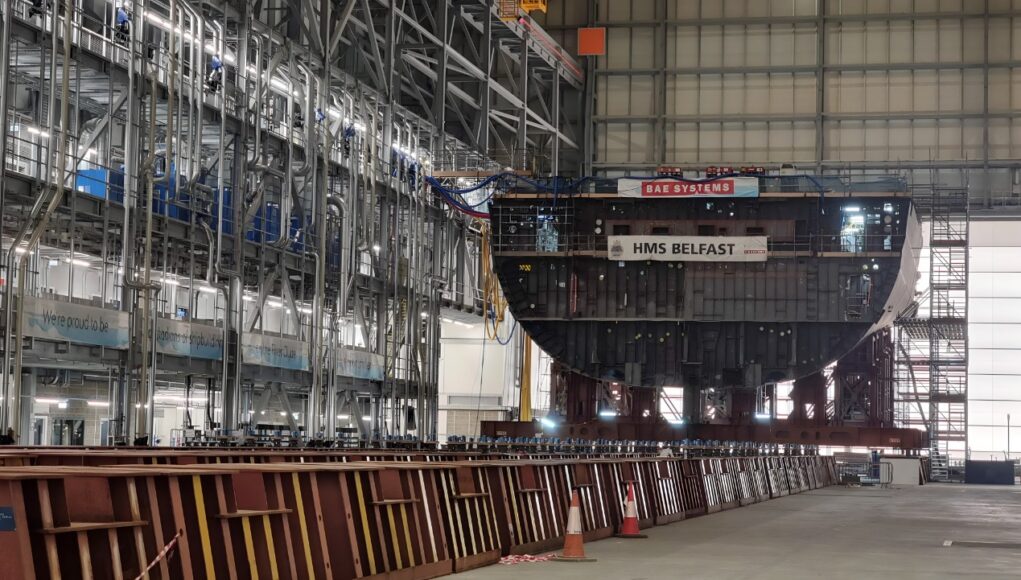

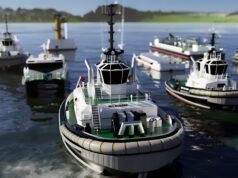
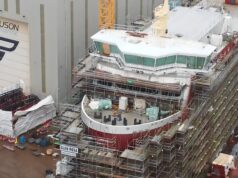

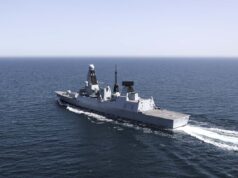

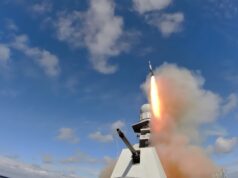
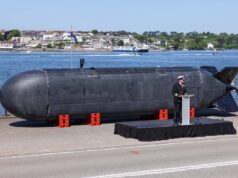
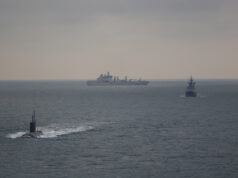
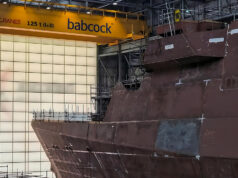

Just an observation. I’m sure HMG are just about to jump into this issue and resolve the problem.
SDSR stated very clearly the RN will have “at least” 25 destroyers and frigates in service. We are “at least” a minimum of 6 ships short. Any chance of more type 26 being added to the programme?
I’d have thought 2 more type 26 and a further 4 type 31s was exactly what the RN needs.
Then add 8 -10 type 83 destroyers and job done
I wouldn’t hold your breath on an expansion to the escort fleet. I felt the FSL during his speech at DSCI made it pretty clear that they are putting all their eggs into unmanned systems as a cost saving measure. I would be shocked if additional orders come through other than the 3 MRSS and 6 Type 83 as major surface ships go.
I suspect they are putting much effort into unmanned systems although not nearly enough. Their strategy is likely to necessitate having some form of Mother ship though and I’m not confident either T26 or T31 will be much use for that. I would suggest that if serious sea trials of the T31 and/or T26 get good results then additional batches will be announced although the specific design may well be adapted.
Maybe they do that for Type 31 if there is a concern that exports won’t be able to keep work going at the yard, but lets not pretend that the MOD is suddenly concerned about the size of the fleet. We are talking about the same people who allowed Barrow to die off between the V boats and Astutes to save money only to cause untold damage that is still bring felt now.
I suspect the Government is extremely worried about hostilities between Russia and NATO and consequently we need more lethal force in all areas of the armed forces despite their wish to spend in other areas. Times change and there is no peace dividend now. Past behaviour is not necessarily an indicator for the future although it must be said that there are politicians daft enough to believe that there is no need for a military at all.
Are you talking about the SDR25 or the previous Conservative-led SDSR? I don’t believe that SDR25 mandated a 25-ship escort fleet.
Agree. I missed that. It was speculated before the “document” came out, but it was, as always, devoid of real details or any commitment.
The only commitment I recall was to the 12 SSN, which is about as reliable as Adolf Hitler given the long lead times and ability of future governments to fiddle and alter.
Hey Daniele – liking your Hitler analogy, very on point. To brighten your day, here is a summary of Hitler’s 1938 foreign policy: “All I want is a little peace, peace I tell you! A little piece of Poland, a little piece of France, a little piece of Austria and Czechoslovakia, by chance!”😊
They may build a few more type 31s as its cheaper and quite modular. I cant see them building more Type 26s but i would like to be proved wrong
As far as I understand it the idea is to pair a.T26 with a much cheaper unmanned or optionally small crewed vessel to work as a pair rather than using two T26 to hunt down a submarine. If actively pinging a towed sonar aray the need for stealth on the vessel towing isn’t so great.
Something like a batch 2 OPV with only 20 crew which could be taken off by helicopter once on patrol. That would leave the T26 to be silently listening.
A second unmanned- optionally small crewed vessel could be stationed fifty miles away to detect and potentially defend against air attacks and could also stop in the water and listen silently. Batteries could be used to maintain ships systems for longish periods of time with no engines running.
That would provide a far more cost effective submarine screen than building more T26
You might well be able to get four unmanned -optionally low crewed vessels for the cost of one T26.
Many moons ago the RN (early 80’s) had the then DG of RN Ships look at a minimum manned seaworthy vessel that was capable of towing a TASS at 20 knots with a landing / refuelling deck for a Merlin Helicopter. The result was a 10m stretched Castle class OPV but with Diesel Electric drive for quiet running, the Castles were a very Seaworthy design
Perhaps someone should dig the design out 🤔
An a OPV to defend against air attacks, really?
I thought you would of known the answer to your question by now, Mr Bell?
I really think BAES are going to struggle to fullfill this export order on time, due to capacity constraints like shortages of skilled workers etc.
What does building in parallel mean? There are two slots in the build hall so BAE are already building in parallel. Will they be assembling more than the current two ships at once and if so where? As the second part of the article is just a cut and paste of the aspirations from June, before the Norwegian order, what can we expect to see now?
I really wish George would date his cut and paste sections. Those less used to his style can find them misleading.
It means that the Norway T26s will be built separately on a different site with a different workforce thus not affecting the UK build in the slightest.
No it doesn’t
Where is the skill workforce coming from?
BAES are going to struggle with delays, in fullfilling this export order.
Yay I’ll now cheer, it’s been a long time coming but it’s now all down to BAe and the supply chain to deliver, so good luck to them. All building in parallel just means 2 in the hall side by side and then back through the assembly process, I don’t know which hull number is going to Norway but at some point it will go 1 for us and 1 for Norway.
If they get to a 12 month drum beat by hull 5 then it isn’t going to slow the RN deliveries by much at all as the 1st 4 are at 18 month intervals.
My main concern is the emphasis on Govan but very little is said about Scotstoun where the fitting out is carried out, I do wonder if that may be split for the Norwegian ships so some of it is carried out in Norway.
Exciting times so now JFDI !
Yes the bottleneck of Scotstoun.
When George posts pictures of HMS Glasgow and HMS Cardiff fitting out, there is equally big empty drydock between the two ships.
Can this not be used to help throughput?
Poor English
Can this middlr drydock be used or is it u/s?
Yes, Scotstoun has three drydocks, all large enough to accommodate a T26. But a big problem is that the yard has barely sufficient skilled workers (employees and contractors) for the outfitting of two ships, trying to do three would currently be a pointless exercise in “spreading the jam far too thinly”. Also the shoreside facilities need a significant modernisation, and ideally expansion to south east where there is still some derelict land. Scotstoun is likely to always to be pacing item for T26 deliveries. Govern will need to send to Scotstoun ships that are closer to 60% than 50% complete in order reach a sub-12-months delivery rate.
Nope not really 2 of the docks are used but for different parts of the fit out process, one for general hull work and the other has pits in the bottom of it to allow the fitting of the bow sonar at one end and the props, shafts and Rudders at the other.
The throughput is slow because they have been forced to pretty well re invent the wheel from scratch. No major warship was outfitted anywhere in U.K since Duncan in 2013, so the skills / jobs were lost.
But they will get better at it and hopefully HMG learns from this very expensive mistake and actually orders either more T26 or T83. Either way as Norway is supposed to get involved with the workshare it would make sense to get them involved.
Good to hear this. I was wondering about how this would effect our production.
I suspect Norway will get ship 2 as it’s likely they will both end up commissioned in 2028 but the RN will need to first in class trials and the Norwegians will want to conduct their own first ship in service trials as well. This would essentially give both navies operational T26s in 2030.. others the RN will end up with two T26s delivered in the same year while it’s trying to do first in class trials.
Essentially Cardiff will end up having to wait for Glasgow to finish first in class trial before the RN could declare both operational.
The speed up of the build to 5.6 years has concertinaed the these ships massively.
So as I see it, that grouping of ships means
RN
ship one (Glasgow) C 2028- operational 2030
Ship three ( Belfast) C 2029- operational 2030
Ship five (shef) C C2030 -operational 2031
We know from press leaks (the type which are very unlikely to be wrong) that Norway was offered in negotiations any two of Belfast, Birmingham and Sheffield. Still no official news of which they have gone for.
If the Type 23 ASW have been flogged to death we need Glasgow and Cardiff before Norway gets hers.
Richmond and Portland due Lloyds inspection soon so highly likely to find issues as oldest of ASW fleet in service??
I’m betting on number 3 or 4 (Birmingham or Sheffield), simple reasons are the 1st 2 have been launched / named, both have crews assigned and it will be 2030 by the time trials are complete. All new ships have issues that need de-snagging, so it’s much better for Norway to wait till RN have got them fettled and lessons learnt into the B2’s.
Besides which Norway has a much bigger problem than the RN has to deal with before they transition to T26, they need to increase the overall crew numbers by about 40% and also learn how to operate completely new systems and propulsion machinery.
And then there is the small matter of support infrastructure, which needs to be in place before taking delivery. BAe’s partner is Hamek and they are presently working on either expanding their existing dock at Harstad (uncovered and too small) or build a bigger new and covered one. Harstad is in the North of Norway so a covered dock would be pretty sensible.
The latter is quite interesting as it’s the big long term issue with both the T26 and T31 where are we going to dock them ? No one seems to be thinking about that one.
66mths to build a ship….what are they doing? Not much be the sound of it. Long lead items should have already been ordered
and that sounds optimistic by today’s mod standards
Up to now they have been building ships at the schedule governed by MOD / Treasury staged payments schedule which is Snail like. Imagine building a tower block of 10 floors and the overall payments are in 10 annual lumps. Yep it takes 10 years when it could have been done in 5.
So it’s nothing to do with BAe or its workforce, it’s how the contract has been designed, it’s not an efficient nor sensible way of doing business. And as MOD have left BAe holding the Baby on numerous occasions I’m not surprised they’re cautious about getting paid and sticking to the schedule.
Oh and FYI the lead items were ordered years before main construction even started so that they could be test bedded (it’s a brand new propulsion system), that is a lesson learnt from the T45 fiasco. The only issue that could have delayed Glasgow was due to a perceived fault in the Gearbox, it had a resonant noise at full power, which as it’s an ASW Frigate needed to be solved. The solution was to not fit it during block build, but leave a path in the hull so it could be fitted later. It turned out it was nothing to do with the Gears but in the Test Bed, so all now good.
Money drives the speed of delivery in industry and £10 billion of Norwegian orders just Turbo charged it.
west european leaders have been asleep on the job for 30+ years, spending money of free saniatery products for schoolgirls when they should have been keeping our defenses up to date, and even worse, they have reneged on the assurances gvien to russia that nato would not expand eastwards
of course, other than using nuclear weapons, russia’s invasion of ukraine has demonstrated it’s clearly unable, (and almost certainly has no intention of), invading the west, but hey, let’s pour our momey into conventional weapons
Seems a long time ago – but I remember answering a Quora question where I was confident that Russia wouldn’t invade Ukraine. I based it on the size of the Russian defence budget, thinking that it wasn’t enough to maintain everything and that they would be reduced to be able to man a few headline elite units, with everything else hollowed out to such an extent they couldn’t be used.
Russia attacked anyway. Remember those Chinese tyres? Fact is, Russia has demonstrated that being unable to invade the west won’t stop it. They made an assumption that Ukraine would fold; frankly I think they would make the same assumption about the west. That’s why we have to pour our money into conventional weapons.
sorry, russia hasn’t been able to subdue a population of 40 million people with a much smaller economy, if your going to pretend they might attack western europe, with a population of 450 million and an economy massively bigger, than their’s your living in cloud cuckoo land
the only scenario in which that’s going to happen is one in which the west threatens riussia’s security, you can then forget conventional weapons, the war will be decided by tactical nuclear weapons
Except Russia wouldn’t be attacking ‘western Europe’. There would be border incidents then an incursion into one of the Baltic states, ‘We are protecting Russian nationals from abuse’, NATO keep out of it it’s none of your business’… and assuming that the rest of NATO would try and negotiate or back down.
By the way, I’m not saying Russia will attack. I’m saying we have to do what we can can to decrese the chance of it happening. Cloud Cuckoo land was 2014 and 2022 – 2014 worked for Russia, 2022 happened when I thought it wouldn’t. Turns out in 2022 I was in Cloud Cuckoo Land. Today, perhaps you are…
except to the extent they attack a nato country, they attack western europe, all for one, one for all
the philosophy of nato has always been the use of nuclear weapons, and russia knows, which is why russia always treid to negotiate a no firs tuse treaty, rejected by the west, once nuclear weapons are used it will escalte inside hours, that’s the nature of their destructive power, and ability to kill elite’s at distance
Point being, Russia may think that NATO would back down over ‘minor’ issues until they gradually get less and less minor. Eventually take over a border region at the ‘request’ of the Russian part of the population in the belief that NATO will not take extreme measures. We’ve already had Trump muddying the waters by saying he wouldn’t defend a NATO country that didn’t pay it’s way. Grab, stop when there’s a lot of opposition, then negotiate to keep what they’ve got.
Remember what Article 5 actually says ‘Each member state is obligated to take “such action as it deems necessary, including the use of armed force,” to respond to an attack, ‘ – Russia could decide that no member would deem the use of armed force as ‘necessary’.
actually i don’t know what your point is other than that russia would back down if nato came at them with force, and of course they would do so
Perception. If Russia perceives that NATO is ‘weak’ then they might attack. I didn’t think they would in 2022 – they shouldn’t have but they did because they thought Ukraine would cave. Argentina invaded the Falklands because they thought that the UK would cave in. The current situation is that America is perceived as a weak link, quick land grab in the Baltic and perhaps NATO would cave in an try to negotiate.
There was no such promise made that NATO would not expand East. Gorbachev himself in an interview in 2010 stated that there was no promise like this ever made and that the only agreement made was that there would be no NATO soldiers stationed in the territory that was East Germany. In his own words NATO fulfilled this promise, and at no point until after Russia invaded Crimea in 2014 did NATO station any soldiers there.
oh right, do a search on ‘nsarchive, what gorbachev heard’, then come back and tell me whether such a promise was given !
i suspect gorbachev is embarrased he was so easily fooled ?
Why would Russia get a say in what NATO do? Why would Russia get a say in what any of the states formerly occupied by Russia do? Countries in eastern Europe wants to join NATO because they have first hand experience of what happens when Russia invade and occupy. No one sane wants anything to do with Russia. NATO is the only game in town who can guarantee security for Russia’s smaller neighbours. It’s rather obvious they’d wanna join NATO. Sweden and Finland held out for the longest time but after both being repeatedly openly threatened by Russia coupled with the invasion of Ukraine they both folded and joined NATO. It’s not NATO who is the aggressor in this neighborhood, no matter what Gorby said on different occasions. He’s Russian, he doesn’t get a vote in what independent nations do.
so you haven’t bothered to do the search i indicated ?
come back with a sensible comment when you have !
What Gorby thought, heard or believed he heard 35 years ago is rather irrelevant. Russia signed the Budapest memorandum promising to respect and defend Ukrainian borders in exchange for the Ukrainian nukes. The world changed, Russia started attacking its neighbours. For some reason the neighbours doesn’t like that and try to do something about it. Russia like being able to coerce smaller neighbours at will and starts whining and blames NATO for not being fair. End of story.
of course it’s not, it’s the west’s fault id they didn’t time limiting their commitment, as for the budapest memorandum, that was cast in a new light when the west assured russia nato would not be allowed to spread eastwards
if you want to know where the moral rights are in this ask yourself why the west is denying it gave russia these assurances, you can still find the lie on the nato website, they don’t argue for the budapest memorandum, they know that was superseeded, they just deny the assurances given
do you understand now ?
Best thing BAe did was build the build hall. Should have been done sooner, but sadly lack of MOD and other Government funding and support.
So no confirmation as to whether Norway will take one (or more) of the T26s currently in build?